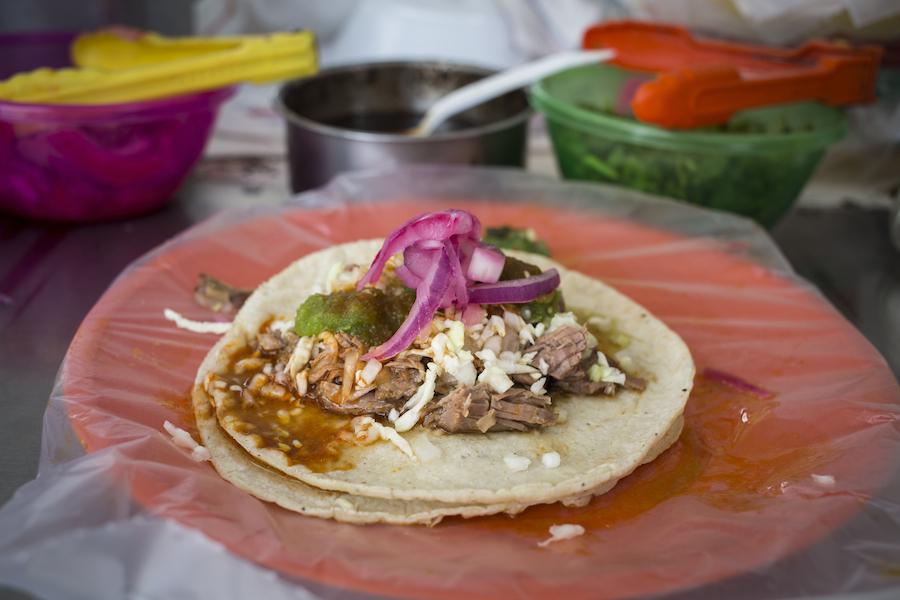Where to eat and drink • What to do • Where to stay
It might be tempting to dismiss Puerto Vallarta as Mexico lite, a Pacific Coast tourist town safe for those with zinc-streaked noses on a steady diet of beach reads and hotel food.
I’ll admit I did so myself, until my sister invited me to share an apartment she’d rented there one winter in the bougainvillea-studded hills that surround the Zona Romantica, the city’s cobble-stoned heart.
Yes, there are cloistered resorts and cruise ships in Puerto Vallarta — this was the final port of call for The Love Boat, after all — but happily I found both stay put far north of the old city center, which sits in the middle of Bahía de Banderas, the city’s beautiful, U-shaped bay.
I also discovered that many of the tourists who do come to Vallarta — no Puerto needed once you’re there, and you should pronounce it “vahY- ARtah” — are Mexicans from surrounding states. Perhaps it is their presence that ensures you don’t really need a guide to eat well.
If you simply wander the mile-long malecon, the boardwalk just off what’s known as Old Town, you find not just beachwear and nightclubs but vendors selling skewers of shrimp and whole fish grilled in bright-orange achiote paste, or a sandy seat under a palm-frond umbrella, yours for the price of a margarita.
Under the malecon, on the other hand, you might stumble on an illicit oyster bar, a folding table where locals crack open oysters served on a paper plate. Most customers dress their raw bivalves with a shot of Huichol, the region’s all-purpose, thick, dried-chile-based hot sauce, named after the indigenous people who still live in the Sierra Madre Occidental mountain ranges that separate this area from the rest of Mexico.
Meander the streets east from the waterfront, maybe to the iconic, crown-capped Church of Our Lady of Guadalupe (Vallarta’s chief landmark) or along the Cuale River (which cuts through town, its banks cluttered with shops), and you’ll be treated to coconuts popped open with a machete for a dollar and change, and trucks of all sizes selling tacos 24 hours a day. (In this part of Mexico — the north-coastal stretch of the state of Jalisco, they’re usually dressed with pink beans, shredded cabbage and purple onions soaked in habanero-citrus dressing.)
Big-wheeled pushcarts go by, selling pours of freshly squeezed orange juice or a cup of tejuino, a traditional beverage in Jalisco made by boiling masa with water and brown sugar. It’s left to lightly ferment, then served with fresh lime juice and a sprinkle of salt: A glass costs less than a dollar, salty, sweet and icy cold.
Restaurants and stalls everywhere advertise mariscos, or seafood, thanks to the area’s ample supply of pompano, shrimp, snapper, mackerel and marlin, to name but a few. One of the most beloved stops for tourists and locals alike is Mariscos El Guero, which grew from a street cart to a proper restaurant on the corner of avenue Francisco Madero. Its best-sellers — which rank among Vallarta’s greatest culinary hits — include smoked-marlin-stuffed green chiles, fried shrimp tacos dressed with shredded cabbage and salsa verde, and tostadas topped with the classic ceviche preparation of the region, meaning white fish ground with carrot, onion and chiles.
But the ocean is only one of Vallarta’s geographical lures. Head out of town in any direction and steep, curving roads lead you almost immediately to dense, green thickets of rain forest, where you’ll see not just waterfalls but avocado trees covered with the striped, pear-shaped local varieties of the fruits and tiny coffee farms like Café de Altura la Quinta Mary in San Sebastián del Oeste. Working on a few acres in the mountain canopy northwest of the city, you can find their organic beans under the “La Quinta Mary” label back in Vallarta.
If you drive south of the city — past Mismaloya, the famous beach town where John Huston filmed his 1964 classic The Night of the Iguana — you’llalso reach tiny Sierra Madre mountain villages like El Tuito, where restaurants sell glasses and bottles of locally made raicilla. It’s an intense agave-based spirit similar to tequila and mescal, still rarely found outside of the southwestern part of Jalisco.
You don’t have to leave the city to feel the force of the Sierra Madres. You need only go a few blocks in any direction from the boardwalk before the bumpy streets rise into narrow stone staircases cutting into sharp inclines. If you’re lucky, you’ll pass by of Vallarta’s small neighborhood markets, where you can stock up on freshly made tortillas, pre-marinated carne asada or sweet small oranges, prickly pears and tiny, flame-colored tree fruits called jocote.
One the way back down to the waterfront, be sure to stop for another of Jalisco’s most famous dishes: birria de chivo, a slow-braised goat stew made with multiple chiles and aromatics like marjoram, clove, cinnamon, bay laurel and cumin. It is nearly as popular in Vallarta with locals as the mariscos, usually sold from tidy trucks where it’s folded into fried corn tortillas with a ladle of sauce. (They typically make a version with beef, too.)
Many of the best, like the Robles cart on a corner of Constitución, are sold out of birria by 2 p.m. But perhaps that’s a good thing — after all, if you’ve come all this way, you should probably spend at least a little time on the beach.
Where to eat and drink • What to do • Where to stay
Photo credit: John Taggart



